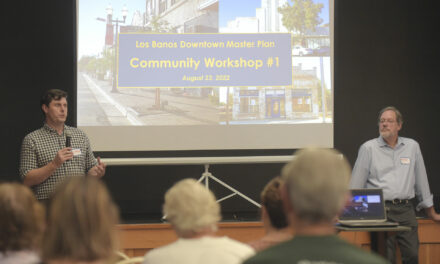CThe Los Banos City Council, at its June 19 meeting, addressed local roads and traffic in several actions.
The council approved the adoption of a list of projects for the fiscal year 2024-2025 funded by SB 1, The Road Repair and Accountability Act of 2017. This funding is for ongoing road repair and infrastructure improvements throughout the city.
Additionally, the council accepted the completion of the Pacheco Boulevard (SR-152) Signal Synchronization project, a federally-funded initiative. This project aims to enhance traffic management and safety along Highway 152 within the city limits.
In considering the approval of the transportation impact analysis guidelines dated April 29, 2024, the city’s Community and Economic Development Director Stacy Souza Elms introduced Ian Barnes from Fehr and Peers, the traffic engineering consulting team working on the city’s traffic master plan. Barnes presented the guidelines that aim to standardize the preparation of traffic impact studies, ensuring consistency across future projects.
Currently, the city lacks standardized practices for traffic studies, leading to case-by-case analyses. This inconsistency can result in various methodologies and delayed project evaluations. Barnes explained that the new guidelines would address this issue by focusing on three key areas: congestion-based level of service (LOS) analysis, California Environmental Quality Act (CEQA) required vehicle miles traveled (VMT) analysis, and other CEQA-required assessments related to pedestrian, bicycle, and transit systems.
The LOS analysis grades road congestion levels from A (least congested) to F (most congested). The city’s general plan policy aims to maintain LOS Level D or better at intersections and LOS Level C or better on road segments.
The VMT measures the total miles driven by vehicles and is necessary for evaluating the environmental impact of new developments. For residential projects, the guidelines propose using the citywide average home-based VMT per resident as a threshold. Employment projects will use the Merced County average commute VMT per employee, and retail projects will focus on the net increase in total VMT.
Barnes noted that the guidelines also include multimodal CEQA analysis to ensure projects do not hinder pedestrian, bicycle, or emergency vehicle access.



